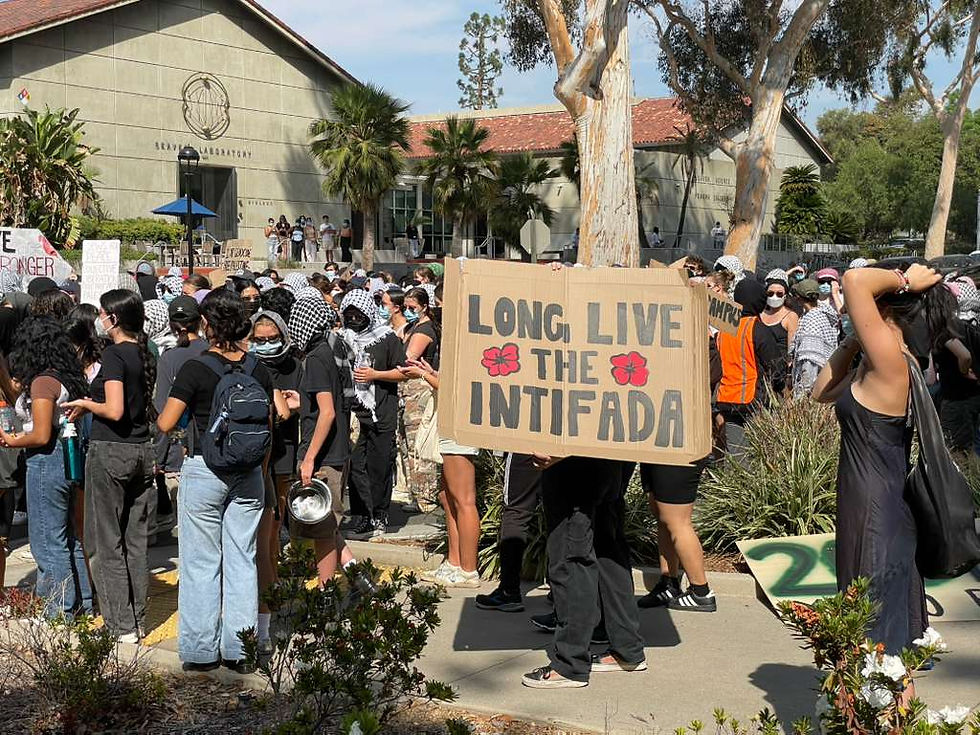Who We Are: A Survey of the Claremont Independent Staff
- The Claremont Independent

- May 14, 2015
- 4 min read
Between the George Will disinvitation at Scripps, the Allan Cunningham controversy at Harvey Mudd, and the one-sidedness of political discussions at the Claremont Colleges as a whole, it was a rough year for those who made controversial statements at the 5Cs. It is no surprise, then, that the Claremont Independent has experienced unprecedented growth this year, doubling the size of its staff to 40 writers. While CI writers used to be almost exclusively CMC students, all five schools are now represented, with the majority of our writers (56%) hailing from one of the other four Claremont Colleges.

The CI often gets a bad rap around the 5Cs—many people consider us to be a group of crazed right-wingers trying to spread our propaganda around the campuses. In reality, we are an independent publication in all senses of the word. We do not receive any funding from any of the colleges, and we have no official political affiliation. As an independent magazine, we have the autonomy to write articles about things that other Claremont publications cannot or will not comment on. As a result, students are often drawn to us because we can provide them with an outlet to express opinions that would be frowned upon elsewhere.

Consequently, our staff is predominantly conservative: 63% of CI writers describe themselves as either Moderate Republicans or Republicans, and 96% of our staff identifies with a political ideology that is typically considered “conservative.” Almost everyone on our staff supports a Republican candidate for the upcoming presidential election, and nobody on our staff is planning to vote for Hillary Clinton in 2016.

To gain a better sense of the CI staff’s political leanings, I took a survey asking about our writers’ opinions on twenty different major political issues. The issues surveyed included economic, social, environmental, and college campus-related topics. The responses revealed that the majority of our staff supported the conservative stance on sixteen of the twenty questions. The issues where our staff’s collective stance leaned more toward the traditionally liberal side were gay marriage, the legalization of marijuana, abortions, and income-based affirmative action.


On the whole, the respondents were conservative on fiscal issues and split on social issues. This is to be expected, given that approximately one-third of the CI staff identifies as either a Libertarian or a Classical Liberal, both of which tend to be socially liberal.

For eleven of the twenty issues surveyed, at least 20% of respondents fell on each side of the debate. For all but five issues, at least 10% of respondents held the minority opinion. There was only one question that every CI survey respondent agreed upon: “Should able-bodied, mentally capable adults who receive welfare be required to work?”

While the CI staff remains divided on several issues (such as the death penalty and gun control), we are much less divided on more prominent issues (such as sexual assault adjudication policies, minimum wage, and Obamacare) that are frequently brought up in conversations around the 5Cs. Those who feel like their opinions are left out of these common campus conversations are more likely to join the CI to articulate and reflect on their ideas without getting shut down, which explains why our staff’s opinions are more homogeneous on the more popular topics and more divided on those issues that are discussed less often.


Though the CI staff is not especially diverse on the “Democrat vs. Republican” front, there is still plenty of variety in the different types of conservative ideologies our staff members hold. At schools like the Claremont Colleges, where there are ten or more students who support the Democratic Party for every student who supports the Republican Party, most politically conscious students can easily distinguish between a liberal, progressive, and centrist Democrat. However, it is harder for students who lack exposure to conservative thought to immediately recognize how various types of conservative opinions differ from one another.
Democrats typically advocate for social and economic equality through a combination of progressive income taxes, government regulations, and interventions. In general, Democrats believe the best solution to economic and social problems is the institution of more government programs. Therefore, most Democrats support universal health care, environmental regulations, and labor unions.
The Republican Party’s platform is based on conservatism, advocating for a free market capitalist economy, small government, strong military, and social conservativism. Like Republicans, Libertarians, who are not designated as either Republicans or Democrats (although Libertarian politicians tend to run as Republican candidates), support the free market and limited government. However, Libertarians differ from Republicans by calling for a more limited military, unrestricted migration, and social liberalism.
Classical Liberals’ political opinions are quite similar to those of Libertarians, but they arrive at their conclusions for different reasons. As perhaps best explained by Richard Epstein, the main difference between a Libertarian and a Classical Liberal is that Libertarians tend to focus on ensuring that the government acts in accordance with its designated role (or, more often than not, its lack thereof), while Classical Liberals are typically more concerned with the consequences of governmental interventions.
At schools where there isn’t usually more than one conservative in the room, it is easy to ignore the vast array of right-of-center perspectives. Being pro-life does not preclude one from supporting gay marriage, and favoring lower taxes does not require one to oppose a reduction in military spending. Political opinions are a spectrum, and the CI strives to provide a look into those opinions that often go ignored.
Full Gallery of Responses (25 Slides):
This slideshow requires JavaScript.
.png)



Comments